Varieties and cultivation of white chinchillas
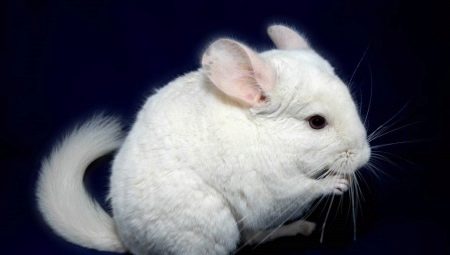
In the wild, the chinchilla is an inhabitant of the mountainous regions of South America with a cold and changeable climate. In order for this fur-bearing rodent to be able to protect itself from low temperatures, nature has awarded it with a warm and thick fur coat. The color of the wild chinchilla is gray with a white belly, but among pets you can find cream, black and even sapphire coat color. The reason for this was the breeders of these cute rodents.
Through crosses, we managed to get new amazing colors. Among them, white deserves special attention, which is divided into many shades and tints, each of them has a name and characteristic.
White Wilson
This color is the ancestor of all other colors with the participation of white. In 1955, American breeder Blythe Wilson bred the first white chinchilla by crossing. Among the carriers of this color coat, completely snow-white varieties are rarely found; this form of color is called "predominant". Crossbreeding between two snow-white individuals can lead to a decrease in the number of puppies in the litter and a decrease in their viability. More often you can find combined types of painting, among which the most popular are:
- silvery - the tips of the hairs of the white fur coat are painted in a silvery color, which creates an unusual smoky tint;
- platinum - they look like silvery, however, their main feature is the white tip of the tail;
- mosaic - there are gray spots of different sizes and localization on the skin, the more distinct the contours of these spots, the more this color is appreciated;
- tricolor - one of the rare colors, on the skin there are spots of black, white and gray in different proportions.
In the platinum type of color, sometimes a gray tint predominates, sometimes it can even look like absolutely gray and indicate that it belongs to the white Wilson color, in this case there will be only a white tip of the tail.
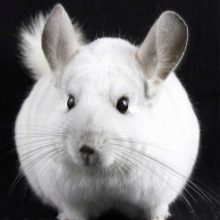
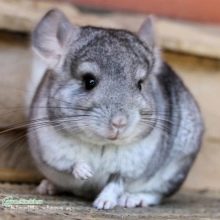
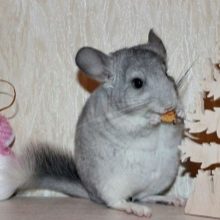
White-pink
This color is obtained by crossing white Wilson chinchillas and hetero beige. He, in turn, is also divided into 2 types: heterozygous and homozygous. A chinchilla of a white-pink heterozygous color has a white coat with beige spots of different sizes and localization. Sometimes only the tips of the hairs are painted in beige, which creates a kind of effect of a pinkish veil. The ears and nose are pink, but sometimes there are small beige spots on the ears.
The homozygous type of pink-white chinchilla is quite rare, due to which it is highly valued... Animals differ from the heterozygous form in that they have a predominantly white color in color, their ears are pure pink without spots, and their eyes are red. Well-defined beige and gold spots in this color are considered very rare.
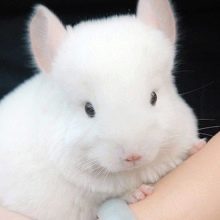
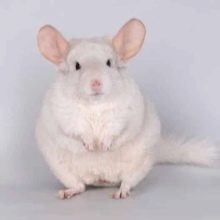
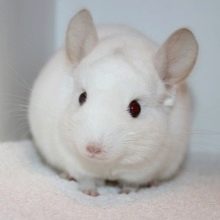
White violet
This is one of the most unusual and beautiful colors, obtained by crossing Wilson and violet. The pure purple color, in turn, is the result of a recessive mutation. It was bred in 1960 in North Africa. Like Wilson, white violet can take on a silvery or mosaic form. However, the place of gray or black in this color was taken by a light purple hue.
Most often it looks like a purple haze around the ears and tail, but sometimes we can find a chinchilla with spots of such an unusual color.
The eyes of such a chinchilla are black with a blue tint, and the ears and nose are gray.
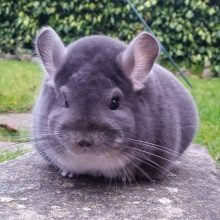
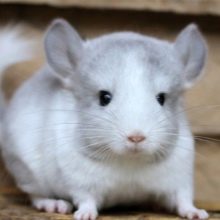
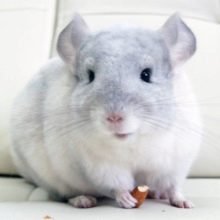
White velvet
Animals of this color have a white fur coat, gray ears and a gray “mask” on the muzzle, sometimes they have a gray tail and gray “gloves” on their front legs. This color was obtained by crossing Wilson and black velvet.
This color got its name due to the surprisingly thick and soft texture of the fur - this genetic feature is obtained from the black velvet color. This type of chinchilla color also has variations, among which are known velvet white-pink heterozygous and homozygous, as well as white velvet violet. These color combinations are a great gift for any breeder and are highly prized.
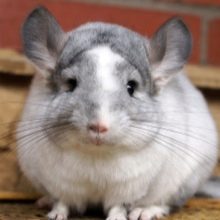
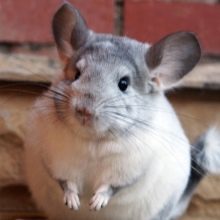
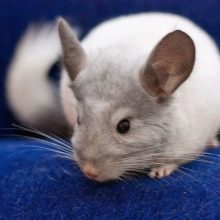
Californian white or "white tail"
This unusual coloration appeared due to a mutation on several farms in California at the same time. Several breeders in the litter began to give birth to gray puppies at once, which became more and more white with age. A clear gray edging was visible at the ears and base of the tail. The rest of the areas could be painted in a smoky or mosaic type, but the main feature of this species is its snow-white tail. For this feature, the color received a second name.
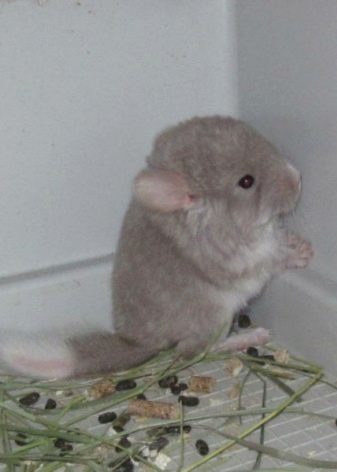

White Lova
This color is among the rarest. It is distinguished by a white skin with a thick undercoat and a creamy veil, which is closest to the shade of champagne. The eyes of these chinchillas are bright red. With age, babies brighten, reaching maturity, get back their unusual creamy tint. For the first time such a color was discovered on his farm by the Canadian breeder Robert Lowe in 2002, and the variety is named after him.
The cost of such chinchillas can reach several thousand dollars, so, perhaps, only experienced collectors-breeders can decide to buy an animal.
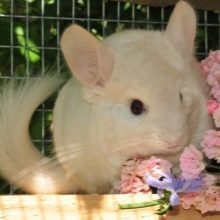
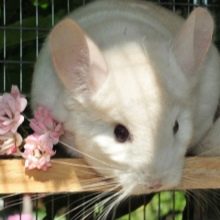
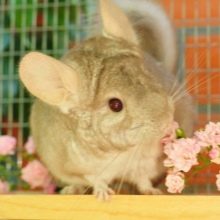
White Ebony
The carriers of such a fur coat are similar to the Wilsons with a mosaic type of coloring. There are two varieties of white Ebony: they can have a white coat with black spots, or, conversely, the advantage is black with bright snow-white markings. Their main difference is the well-defined boundaries of the spots. Localization of spots can be on the head, ears, paws and sometimes on the sides. The eyes are dark, the ears are light gray. Sometimes white spots can have a cream or beige sheen. It is known that carriers of the "ebony" gene have a better and more shiny coat.
There are also various combinations of this type of color, for example, white chocolate.
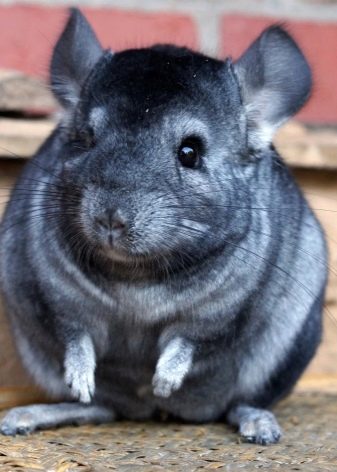
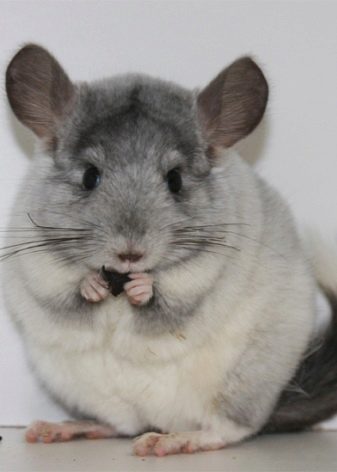
Albino
The presence of the albino gene is manifested by the absence of hair and skin pigment, so these chinchillas, like all albinos, are born with red eyes, have a snow-white coat and pale pink skin. Often, albino animals have health problems, namely visual impairment or complete blindness. To obtain healthy offspring of carriers of this mutation, it is recommended to cross only with bright representatives of the breed. The offspring of such a union will also carry this gene, which can be passed down through one or more generations.
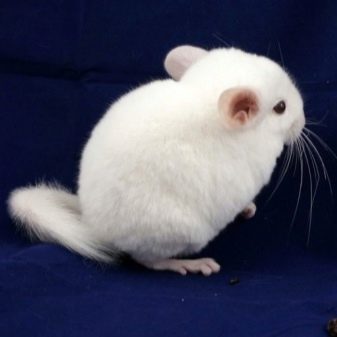
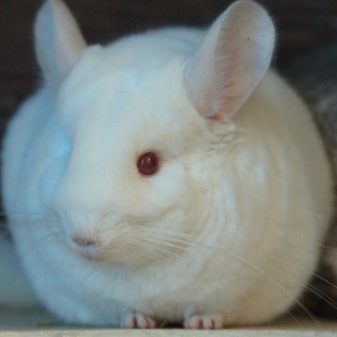
White Royal Angora
This variety appeared thanks to the crossing of the Royal Angora with the Standard and White Wilson. The skin can be absolutely snow-white, have gray spots or a smoky "veil", the main difference here will be a thick undercoat and a surprisingly soft fur coat. The eyes of such a chinchilla are dark, and the ears and nose can be gray.
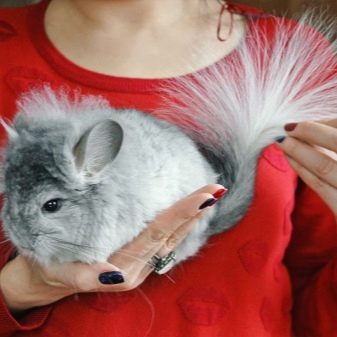
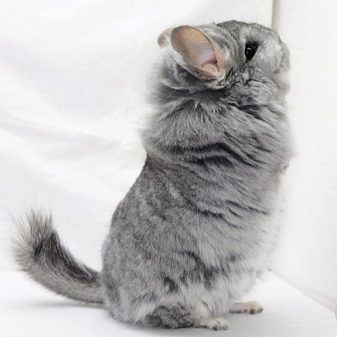
Growing and caring
Caring for a white chinchilla is no different from keeping animals of other colors. For a comfortable existence, a domestic chinchilla needs a spacious cage with a small house inside, so that the animal can always hide and feel safe. It is also better to equip the cage with a wheel, various tunnels and ladders. - so the rodent will be able to fulfill its need for movement.
You can use as a bedding special filler or simple sawdust. Among other things, a mineral stone must be placed in the cage, on which the chinchilla will grind its teeth.

Chinchilla nutrition should be balanced. Since this animal is a herbivore, the easiest way is to purchase special food, which will become the basis of your pet's nutrition. In addition, young sprouts of wheat or oats, as well as dandelion, sorrel and plantain, can be added to the chinchilla's menu from time to time. For comfortable digestion, chinchilla needs hay - it can be placed in a special wire feeder. In summer, the diet of a domestic rodent must be enriched with fresh products; for this, the following are ideal:
- carrot;
- eggplant;
- potato;
- nuts;
- seeds;
- figs;
- apples;
- pears;
- grape.
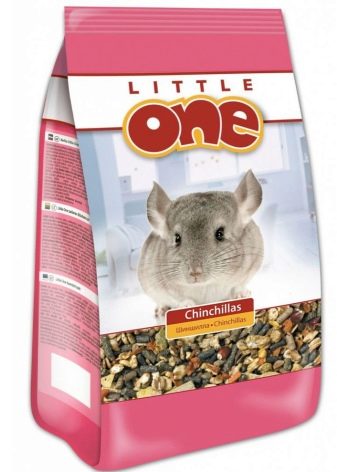
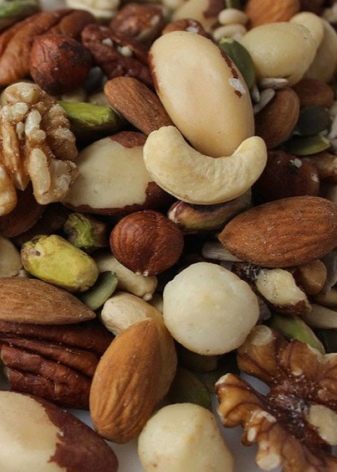
One of the important points in caring for a chinchilla is bathing. Since this animal does not have sweat glands, bathing in water is contraindicated for it. Chinchillas perform this hygiene procedure in the sand. To do this, you can purchase a special container and fill it with sand with antibacterial additives.
You can buy such a composition at a pet store - it should be small and uniform.
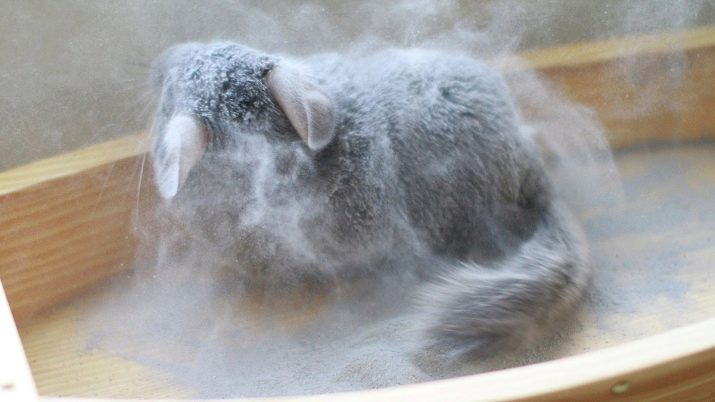
Why does a chinchilla bite?
Despite the sociability and benevolent attitude towards people, the white chinchilla sometimes bites. There can be many reasons for this incident, some of them are listed below.
- Acquaintance... As a rule, this is a light biting, which helps the animal to better remember your smell and get to know each other better. These bites are almost painless and do not cause bleeding. Once the chinchilla has studied you, there will be no need for it.
- Accident. This can happen without malicious intent, for example, you fed a chinchilla from your hands, and she missed a little.
- Protest. This "bite" means "Don't do that!" It means that you are trying to take the animal against its will or is too rude. For example, a chinchilla was asleep, but you suddenly decided to demonstrate it in all its glory to a recently arrived guest.
- Fear... In this case, the pet bites for protection, which means that he feels danger. Perhaps the animal does not trust you.
- Disease. Nobody likes to be touched during an illness. Pay attention to the general condition of the pet - if he is inactive and apathetic, most likely he is sick.
- Still a child... Toddlers do not quite understand what is good and what is bad. Trying the world by heart, they can taste you too.
- The "communal" effect... If more than one individual lives in a cage, not everyone may be to their liking. In a chinchilla, the neighborhood can be stressful, but in a state of stress, everyone can bite.
- Just mischievous. It happens that this is a character trait. If all other possible reasons are excluded, it remains to accept and accept the harm as it is. Naturally, you need to be extremely careful with such an animal, and if it works out, try to wean it from biting.

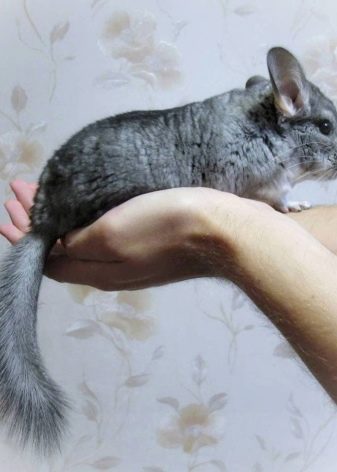
To avoid this behavior, try to communicate with your pet more often, feed him treats from your hands, treat the chinchilla with care and respect. Do not reward bad behavior - immediately after the bite, do not give food to the animal, but wait until time passes.
For information on how to grow white chinchillas, see the next video.








